People
Sonia Gechtoff, Pioneering But Overlooked Artist of the Bay Area Ab-Ex Movement, Dies at 91
Sonia Gechtoff was a key but little-recognized figure in the Abstract Expressionist movement.
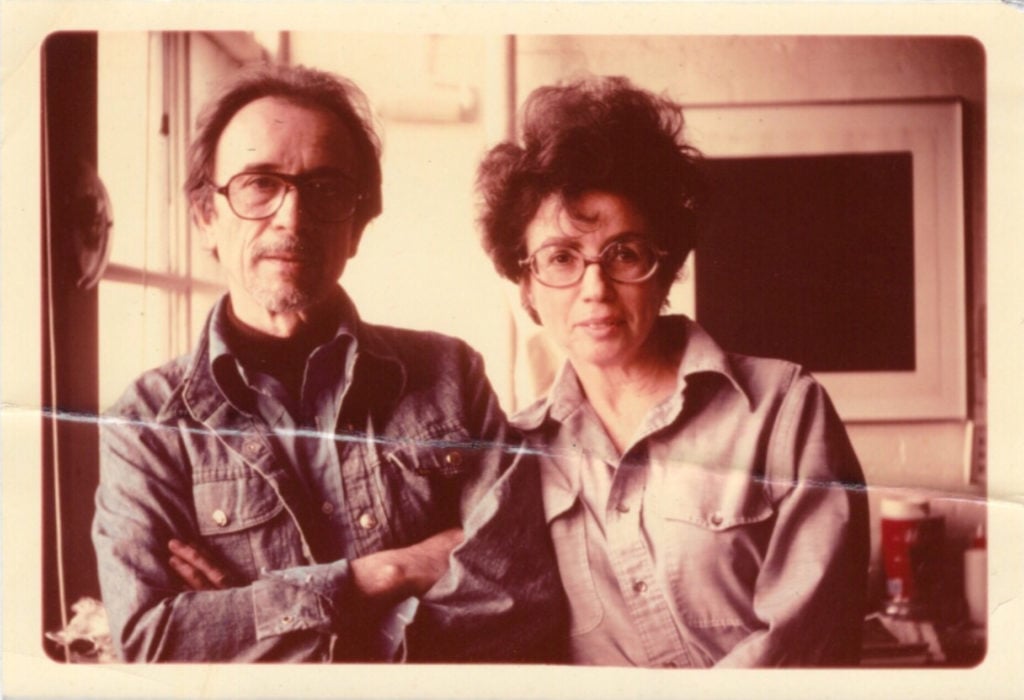
Sonia Gechtoff was a key but little-recognized figure in the Abstract Expressionist movement.

Sarah Cascone

Artist Sonia Gechtoff, an important figure of Bay Area Abstract Expressionism, died on February 1, according to her gallerist, Anita Shapolsky. She was 91.
The artist’s long-overlooked contributions to the Ab-Ex movement were recently acknowledged in “Women of Abstract Expressionism” (2016–17) a traveling exhibition organized by the Denver Art Museum, in which she was one of only three living artists.
“Sonia always believed in herself and knew her work was extraordinary, even during the many years it was under-recognized,” Gwen Chanzit, curator of the Denver exhibition, told artnet News in an email. “Even late in life, she remained mentally bright, and as committed to her painting as ever. Sonia continued painting throughout the last few years when her health deteriorated.”
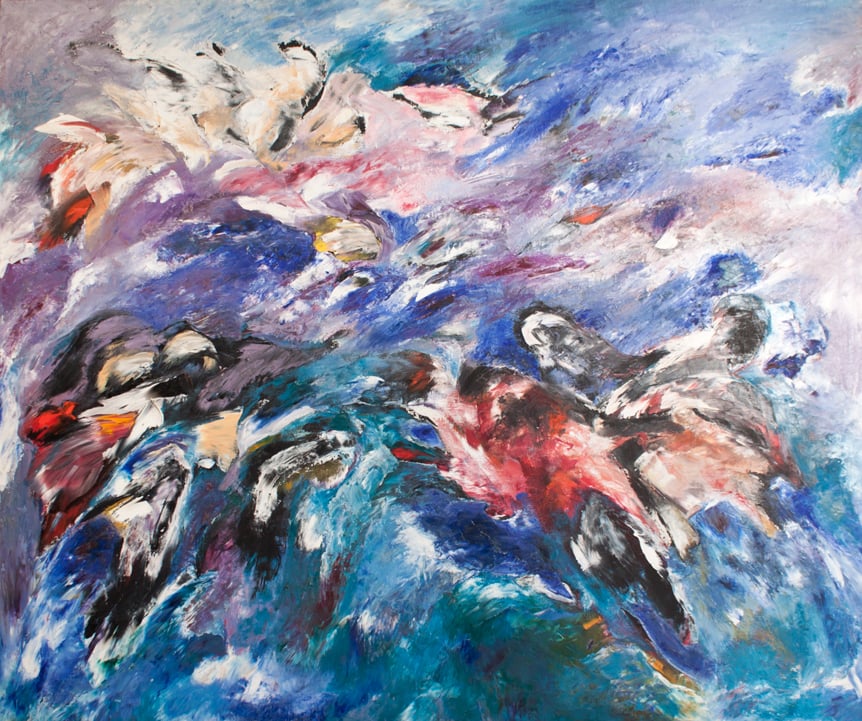
Sonia Gechtoff, The Beginning (1960). Denver Art Museum: Vance H. Kirkland Acquisition Fund, 2015.62. © Sonia Gechtoff.
Gechtoff was born in Philadelphia in 1926. Her father, Leonid Gechtoff (1883–1941) was an artist in his own right, and she received her earliest training from him. (Late in life, her mother Ethel opened East & West Gallery in San Francisco, showing artists including Bruce Conner.) The young Gechtoff became a scholarship student at the University of the Arts in Philadelphia—then known as the Philadelphia Museum School of Industrial Art—and graduated in 1950.
The following year, Gechtoff moved to San Francisco, where she discovered the work of Clyfford Still (1904–1980), who she counted as an important influence. She joined the faculty at the California School of Fine Arts, alongside the likes of Hassel Smith (1915–2007) and Elmer Bischoff (1916–1991), and met her future husband, fellow Abstract Expressionist James Kelly (1913–2003).
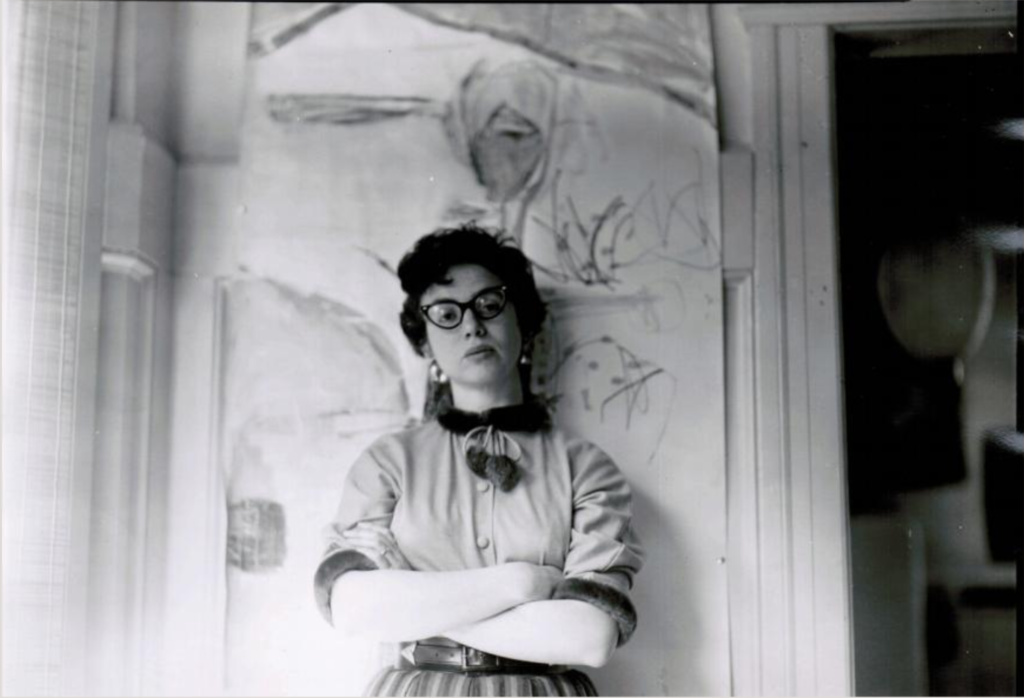
Sonia Gechtoff with a painting by her husband, James Kelley, at her Polk Street Studio in San Francisco (1954). Photo courtesy of the artist.
Though the couple moved permanently to New York in 1958, it was Gechtoff’s time in the Bay Area, as part of an influential artistic community that included Conner and Jay DeFeo, that came to define her career.
“Sonia’s primary innovation was her work with the palette knife—making sharp, slashing strokes of paint,” wrote Marshall N. Price, curator of Modern and contemporary art at the Nasher Museum of Art at Duke University, in an email to artnet News. “This was later adopted by Jay DeFeo.”
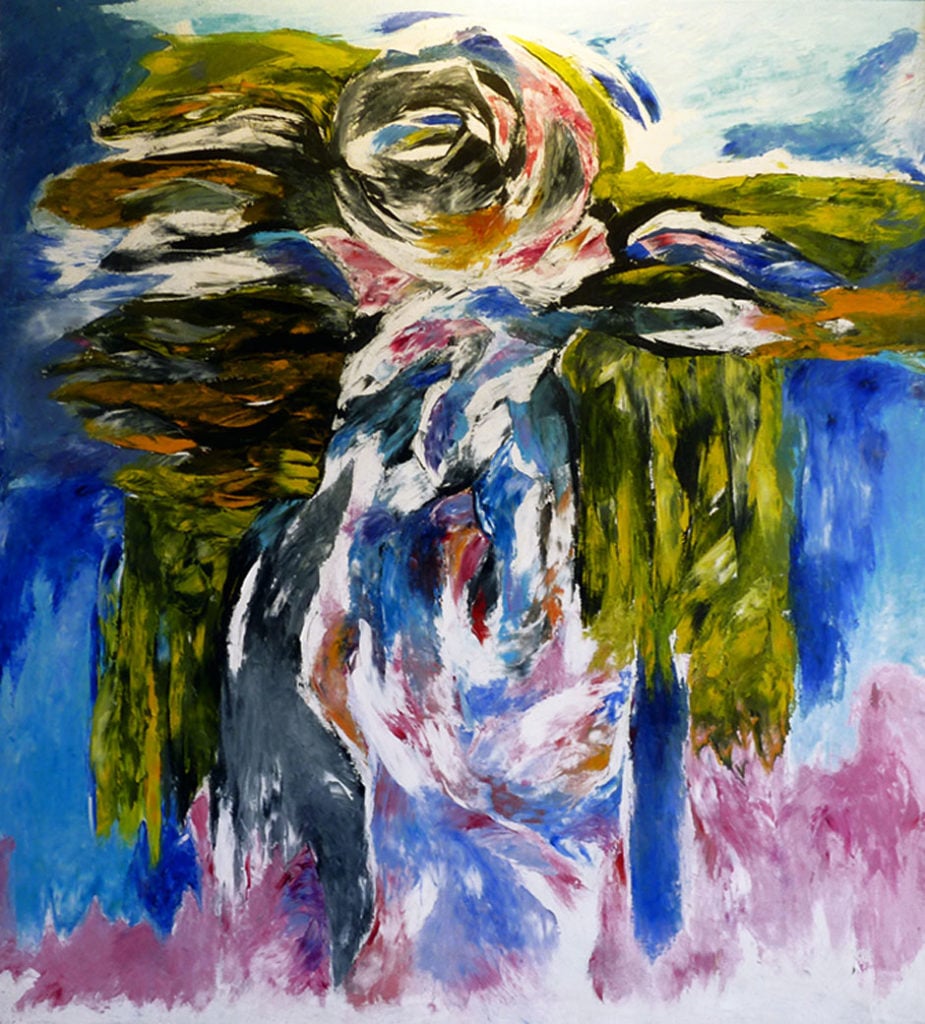
Sonia Getchoff’s The Angel (1960). Courtesy of David Nolan Gallery, New York.
That kind of innovation won over influential figures in San Francisco’s art scene. Gechtoff counted Grace Morley, director of the San Francisco Museum of Art, now SFMoMA, as a champion of her work. Another key supporter was Ninfa Valvo, a curator at the city’s De Young Museum, who “called me up one day out of the clear blue sky and said, ‘I’d like to give you a solo show in January of ’57. Will you have enough work?’ And she did, which was a tremendous thing for me,” Gechtoff told Price in a 2006 interview.
The artist did find some recognition for her work outside of San Francisco. She was awarded the first solo show at the seminal Ferus Gallery in Los Angeles in 1957 and was featured in Time magazine for her participation in the US Pavilion at the 1958 Brussels World’s Fair. Other major group shows included the “Annual” at the Whitney Museum of American Art in New York and the “Carnegie International” in Pittsburgh, both in 1958.
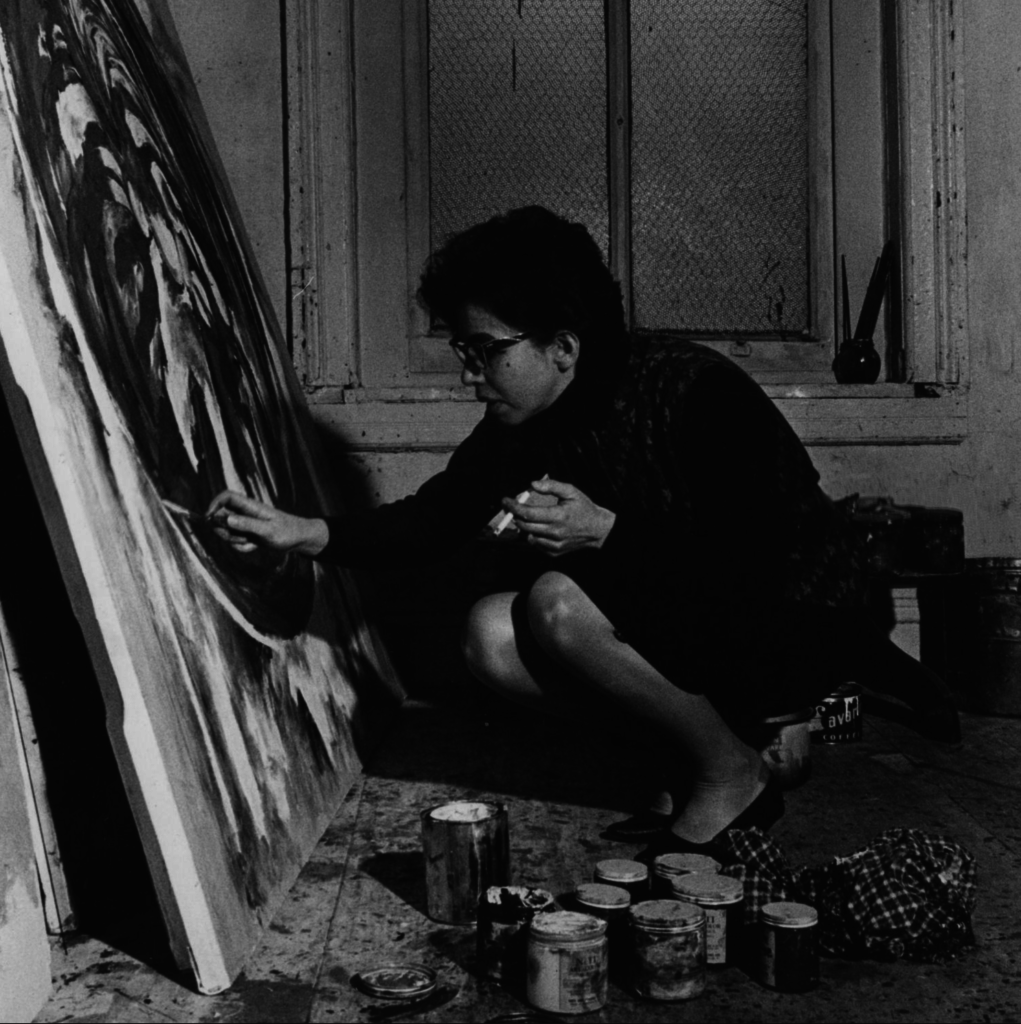
Sonia Gechtoff at Canal Street Studio, New York (c. 1961). Photo courtesy of the artist.
“It was just like a whole bunch of these really major shows that I was invited to,” Gechtoff recalled, noting that her success was due in part to the San Francisco art community, which treated women artists as equals in a way New York did not. “It was a very special place… I wish it would get more credit. You know, people here in New York are so reluctant to admit that anything major went on there.”
After moving back East, Gechtoff “never quite achieved the same amount of electricity around her work,” according to Price.
“Sonia’s experience exemplifies the difficulty of women painters in New York during the 1950s and ’60s. Her early success as a central figure in Bay Area abstraction was cut short when she made the move to New York City,” Chanzit added. “She met with tremendous gender bias in New York.”
Today, Gechtoff’s work is held in the collections of the Museum of Modern Art, the Metropolitan Museum of Art, and the Solomon R. Guggenheim Museum, all in New York. Her works are also in the collections of the Bay Area’s Oakland Museum of Art and SFMoMA, as well as the Smithsonian American Art Museum in Washington, D.C. She is currently featured in the group show “Focus on Abstract Gems” at Anita Shapolsky Gallery in New York.